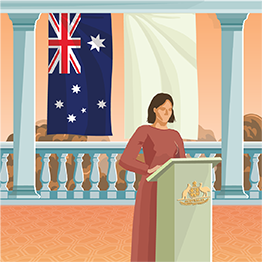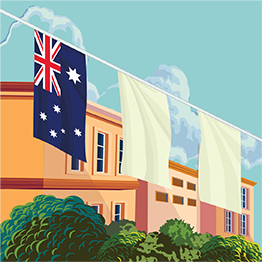Whether the flag is displayed flat against a surface (either horizontally or vertically), on a staff, on a flag rope, or suspended vertically in the middle of a street, the canton should be in the uppermost left quarter as viewed by a person facing the flag.
In the case of the Australian National Flag, the Union Jack should be seen in the top left quarter of the flag.

Even when the flag is displayed vertically, this rule must be followed, although to the casual observer the flag appears to be back to front. The reason for this is that the canton is the position of honour on the flag.
When the Australian National Flag is displayed alone on a speaker’s platform, it should be flat against the wall or on a staff on the right of the speaker as he or she faces the audience.

When displayed on a flag rope (a ‘halyard’), the flag should be as close as possible to the top, with the flag rope tight.
If the national flag is vertically suspended in an east-west street, the canton should be towards the north. In a north-south street the canton should be towards the east.

